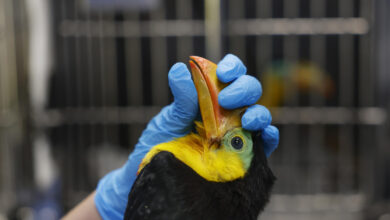Fireworks is a Danger to Human Health, the Environment and Animals
In These December Holidays, say no to Fireworks. Know Here all the Risks that Handling Fireworks Brings to People, Animals, and the Environment.

Photo: Pixabay
LatinAmerican Post | Erika Benitez
Listen to this article
Leer en español: La pólvora es un peligro para la salud, el medio ambiente y los animales
The December season is synonymous with parties, family gatherings and tradition. It is celebrated with typical gastronomy, illuminated public spaces and fireworks. This last factor is one of the most striking in the festivities; however, it is also one of the most risky for people's well-being. In all countries of the world, celebrations are held in which fireworks are used regardless of the large number of people affected.
According to the National Institute of Health of Colombia, the use of gunpowder can cause “hearing damage, more specifically eardrum rupture due to the detonation; first, second, and third degree burns; open wounds and loss of body parts; eye damage and even death. In addition to these serious consequences for human health, there are some animals that are altered by the noise generated by fireworks. Without forgetting the toxins that the smoke leaves and that remains in the air once the show ends.
Fireworks are much more than gunpowder. In its production process and to achieve the different effects and colors, multiple mixtures are made that contain chemical substances. These products are encapsulated in their different packages and presentations, in which chemicals are combined with explosives. When using them, millions of particles and gases are released into the air that harm the environment.
Air quality after a fireworks display
Although fireworks, when the clock strikes 12 on Christmas Eve or New Year's Eve, are a tradition, the truth is that thez are highly polluting. Air quality is compromised during the celebrations, due to the high content of metals used to add colors and special effects. Added to the polluting particles are the residues of carbon monoxide and other chemicals that are concentrated in the environment after the detonations of the explosives.
On the other hand, noise pollution due to gunpowder is also a present problem. According to the World Health Organization (WHO), 65 decibels are the recommended sound limit suitable for our hearing health. The explosion of a rocket or a firecracker can reach 190 decibels, which is more than what the adult ear can handle, so babies' eardrums are more exposed to damage.
Likewise, each year, hundreds of cases of people who suffer physical damage due to the illegal handling or proximity of gunpowder are reported. Unlike the United States, in Latin America the number of gunpowder injuries increases in the months of December and January, due to the Christmas and New Year holidays. Despite the fact that the authorities have tried to regulate its use and sale, it is a recurring concern in these areas.
According to the report of the National Institute of Health of Colombia (INS), so far in the month of December, there are a total of 255 cases of injuries due to fireworks in the Andean country, compared to 2021, decreased by -15.56 %. The report also indicates that 91.4% of the cases are burns. Of these, 60.4% due to laceration, 19.6% due to contusion, 5.5% due to amputation, 3.1% due to hearing damage and 5.5% due to ocular damage.
Another of the elements that are highly dangerous are those known as "balloons of desires", which are propelled with the hot air that is generated and takes unknown flight. The risk is that it could end up on the roof of a house and start fires, as has already happened.
Many of the balloons are sold on the streets without any regulation, and if they are handled, there is a risk of burns. In general, gunpowder injuries are a preventable issue. However, although some countries have implemented legislation to control and restrict its use, these restrictive measures have not been enough.
Animals, the most affected
For many, witnessing a fireworks display is very entertaining, but some animals, both domestic and wild, do not have a good time. For example, the auditory system of dogs and cats is five to seven times more sensitive than that of humans, this loud noise causes a reaction of panic and anguish. This results in tachycardia, gasping, shortness of breath, tremors, and sometimes, in more extreme cases, even death.
A recent study carried out in 2021 by the Alexander Von Humboldt Biological Resources Research Institute, an entity that develops environmental research, revealed the effects that explosions and powerful sounds bring on birds. "The visual and acoustic stimuli of fireworks produce strong reactions in birds and other species, such as increased heart and respiratory rates that end in heart attacks, causing death due to the panic generated."
Experts recommend not self-medicating animals, with the use of sedatives or painkillers, as this only inhibits the animal's response capacity. It is important to put dogs and cats in a place as far as possible, isolated from noise and with some device (television) turned on at a high volume to familiarize them with the noise and to be able to distract them from the fireworks. If you have any birds at home, cover them earlier than usual and place them inside the house in a spot with little light and isolated from noise and smoke.




